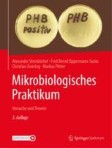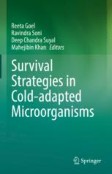Search
Search Results
-
Comparative Transcriptomic and Proteomic Analyses Provide New Insights into the Tolerance to Cyclic Dehydration in a Lichen Phycobiont
Desiccation tolerance (DT) is relatively frequent in non-vascular plants and green algae. However, it is poorly understood how successive...

-
Lineages of the lichen-forming fungus Stereocaulon alpinum and their photobionts in southern South America and maritime Antarctica
Stereocaulon alpinum is a lichenized fungus commonly found in the Antarctic, circumarctic, alpine, and in mountainous areas of temperate regions. It...

-
Photosynthesis measurements on the upper and lower side of the thallus of the foliose lichen Nephroma arcticum (L.) Torss
The measurements of chlorophyll fluorescence play an important role in studies of lichen physiology. Usually, for foliose lichens fluorescence...

-
Symbioses
This chapter treats the various forms of symbioses between several organism groups with cyanobacteria and algae. A separate sub-chapter highlights...
-
Lichen phycobiomes as source of biodiversity for microalgae of the Stichococcus-like genera
The term phycobiome was recently introduced to designate all the microalgae (primary or non-primary) associated with lichen symbioses. Abundant...

-
Lichens of Nepal
A brief overview of the current state of lichen diversity in Nepal is provided. Nepal has a diverse lichen flora. Lichen studies in Nepal were...
-
Biotechnological applications of lichen phycobionts: fast bioassay of environmental toxicity
Microbioassays allow for efficient contamination monitoring and control strategies. Free-living microalgae, representative of the aquatic...

-
Sterol Composition of Lichen Peltigera canina When Exposed to Unfavorable Temperatures
AbstractCurrently, special attention is paid to the study of the mechanisms of stress resistance of extremophile organisms that can survive in...

-
Exkursionen und Demonstrationen von Mikroorganismen an natürlichen Standorten, in Umweltproben und in der Industrie
Botaniker und Zoologen können eine Vielzahl unterschiedlichster Pflanzen und Tiere direkt vor der „Haustür“ einsammeln, um sie im Praktikum zu...
-
Aerophytic Organisms Colonizing Façades: Diversity, Taxonomy and Ecophysiology
Table A.1 to Table A.11 (see Appendix) show the results of the taxonomic analyses of the surfaces of “new” and “old” specimens, “additional” variants...
-
Is Oxygenation Related to the Decomposition of Organic Matter in Cryoconite Holes?
Cryoconite is a sediment occurring on glacier surfaces worldwide which reduces ice albedo and concentrates glacier surface meltwater into small...

-
Diversity of Lichen Photobionts: Their Coevolution and Bioprospecting Potential
Lichens are the symbiotic association of green algae (phycobiont) or blue-green algae (cyanobiont) with fungus (mycobiont). Lichen-forming fungi...
-
High throughput sequencing study of foliose lichen-associated bacterial communities from India
Lichens comprise highly diverse and complex microbial communities, the majority consisting of mycobiont, photobiont, Basidiomycetes yeast and...

-
Lichens of the Negev Desert (Israel): Diversity, Distribution, and Relationship with Microclimate
Lichens are among the most amazing organisms on our planet. Their very structure is unique: a symbiosis of two organisms—a fungus and algae (or...
-
Synergistic Interactions Among Microbial Communities
Microorganisms often coexist with each other in close proximity such as micro-colonies or biofilms and are rare to be obtained as pure cultures from...
-
UV-B induced changes in respiration and antioxidant enzyme activity in the foliose lichen Peltigera aphthosa (L.) Willd.
Lichens are phototrophic organisms tolerant to adverse environmental conditions. However, the mechanisms underlying their stress tolerance are not...

-
Cyanobacteria in Cold Ecosystem: Tolerance and Adaptation
Cyanobacteria are dominant primary producers and near ubiquitous, inhabiting diverse range of ecosystems. They are found in freshwater, marine system...
-
Characterization of the responses to saline stress in the symbiotic green microalga Trebouxia sp. TR9
Main conclusionFor the first time we provide a study on the physiological, ultrastructural and molecular effects of salt stress on a terrestrial...

-
Endogenous NO Is Involved in Dissimilar Responses to Rehydration and Pb(NO3)2 in Ramalina farinacea Thalli and Its Isolated Phycobionts
Lichens undergo desiccation/rehydration cycles and are permeable to heavy metals, which induce free radicals. Nitrogen monoxide (NO) regulates...

-
Physiological and Molecular Alterations of Phycobionts of Genus Trebouxia and Coccomyxa Exposed to Cadmium
Several studies on aeroterrestrial microalgae are unravelling their resistance mechanisms to different abiotic stressors, including hazardous metals,...

